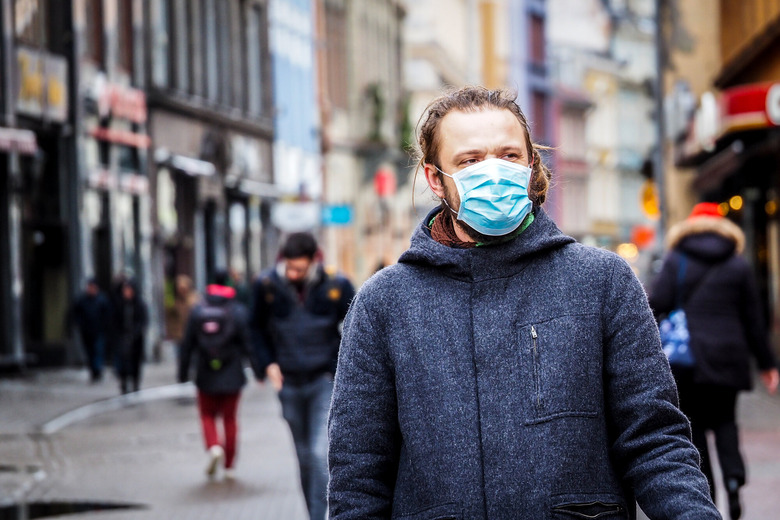Experts Warn That A Huge Coronavirus Wave Could Arrive As Early As Mid-October
- With the U.S. still struggling to decrease the rate of new coronavirus infections, experts believe a second wave is poised to arrive in mid-October.
- Keeping new infections down over the next few weeks will be especially critical as the impending flu season might cause a huge spike in new coronavirus cases.
- In a worst-case scenario, experts believe the coronavirus death toll in the U.S. could reach 400,000 before 2021.
One of the more frustrating things about the coronavirus is that it's lingered in the U.S. simply because many people still refuse to follow basic safety guidelines like social distancing and mask-wearing. And so, nearly six months after the pandemic began, the United States is still struggling to keep new coronavirus infections down. Over the past few days, the average daily number of new coronavirus cases has hovered around 35,000, a figure Dr. Anthony Fauci recently called "unacceptable." Additionally, Fauci has emphasized on numerous occasions that the U.S. could see a huge spike in infections if we can't get the number of new infections down below 10,000 before fall.
Echoing this perspective, we've seen an avalanche of doctors and infectious disease experts point out that we'll likely see a surge of new cases come October due to colder weather and the arrival of flu season.
Speaking to The Washington Post, epidemiologist Eili Klein at Johns Hopkins University School of Medicine said he anticipates that a second wave at this point is an inevitability. And rather than wondering if a second wave is coming, Klein notes that the only question at this point centers on how big the wave is going to be.
"I firmly believe we will see distinct second waves, including in places that are done with their first waves. New York City, I'm looking at you," Dr. Andrew Noymer told the Post. "I expect fall waves starting in mid-October and getting worse as fall heads into winter, and reaching a crescendo certainly after the election."
To date, nearly 200,000 people in the United States have died from the coronavirus. Looking ahead, some experts believe that the figure could reach 400,000 by the end of the year in a worst-case scenario.
Amidst all the discussion regarding a potential second wave, it's worth noting that the second wave of the 1918 Spanish Flu is what was responsible for the vast majority of deaths during that particular pandemic.
To that point, Fauci back in July cautioned that ignoring the severity of the coronavirus could be catastrophic.
"If you look at the magnitude of the 1918 pandemic where anywhere from 50 to 75 to 100 million people globally died," Fauci explained, "that was the mother of all pandemics and truly historic. I hope we don't even approach that with [COVID-19] but it does have the makings of, the possibility of approaching that in seriousness."
"This is a pandemic of historic proportions," Fauci added. "I think we can't deny that fact. It's something I think that when history looks back on it, it will be comparable to what we saw in 1918."
In the meantime, with researchers still working fervently on a vaccine, Fauci a few weeks back highlighted a few activities people should avoid as to prevent the coronavirus from spreading further, a list that includes indoor gatherings, frequenting bars and restaurants, air travel, and going to the gym.
Incidentally, New York City Governor Andrew Cuomo today announced that restaurants in the city can re-open at 25% capacity starting on September 30.
